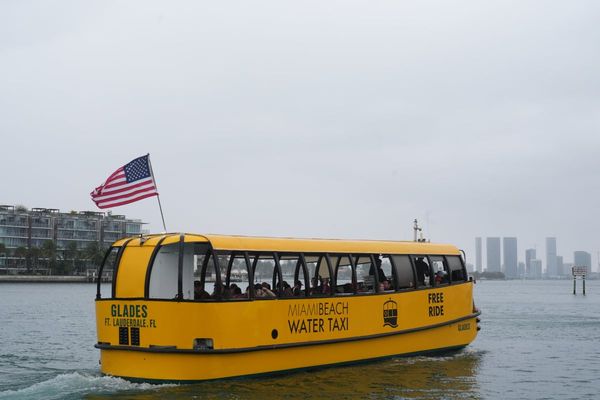
Sherri McKinney, the national spokesperson for the Red Cross, knows just how unpredictable natural disasters can be. She lived through the deadly Nashville tornadoes in 2020 – the 6th costliest tornado in U.S. history. 25 people died, over 300 were injured, and the city suffered 1.6 billion dollars in damage.
The tornado hit overnight quickly and unexpectedly, leaving McKinney and others without any time to evacuate ahead of it touching down.
"Emergencies are more common than people may think, and disasters happen anywhere and any time. It can even begin in someone's own home," said McKinney.
McKinney says that proper preparation can make navigating a disaster event less difficult.
"Being prepared for any type of emergency or disaster can make the difference between life and death," McKinney added. "We can't stress that enough. Have a plan, have a kit, and know how to evacuate your area."
After a disaster happens, it could take days before first responders are able to reach people. And it's usually friends or neighbors in your community who can get to each other first.
Lea Crager, FEMA's Ready Campaign Director, says there are still steps you can take to prepare yourself for situations where your access to medical assistance is limited.
"That's why we tell people [to] take a CPR class, have a first aid kit, know that if something happened in your neighborhood or community, you may be having to help some of your neighbors or they may be having to help you," said Crager.
Crager added that the more prepared you are as a community, the easier it is on first responders. Because there are only so many resources to go around.
A go bag is an important part of your emergency prep
The Red Cross is helping recovery efforts in Maui, and McKinney is stationed there. Following a disaster like the Maui fires, McKinney says people are most in need of food, water, and clothing.
"I think people may think they're ready when something's going to happen. But they usually haven't taken the time to know where a few key items are in their house or things they might need in case of an emergency," said Crager. "You kind of take for granted that everyone will know what to do. But when real events happen, a lot of times, people are stressed and don't think as clearly."
When it comes to a properly stocked go bag, McKinney suggests packing several essential items. Your go bag should be ready with a three-day water supply per person. Make sure that you have foods that are shelf-stable and don't have an expiration date. You should also include first aid supplies.
"We heard of people leaving here with burns on their legs and arms. To have that emergency kit with product in it that you can treat a quick burn or a quick cut is critically important sometimes," McKinney said.
It's important to start slowly building an emergency kit that you can keep nearby, such as in your garage or closet. You can start by buying one item at a time. Or you may opt to create a full list of items you need in your go bag and purchase them in bulk. No matter how you choose to build your go bag, the Red Cross says a go bag should have enough items in it for your entire family for three days.
But the amount of food and water you should have is dependent on where you live. Some local or state officials ask for you to have more than three days of items.
"If you live on an island like Puerto Rico, they request you have 7 to 10 days worth of supplies," said Crager. "If logistical chains are broken, it's going to take longer to get aid and relief to some areas. So if you're in a more rural area, you're probably going to need more than someone who's in an area where you're going to have resources readily available."
You can visit the Red Cross website for a full list of basics to have in your own go bag.
These items include:
1. Water: one gallon per person, per day (3-day supply for evacuation.)
2. Food: non-perishable, easy-to-prepare (3-day supply for evacuation)
3. First aid kit
4. Medications (7-day supply) and medical items.
5. Copies of personal documents (medication list and pertinent medical information, proof of address, deed/lease to home, passports, birth certificates, insurance policies)
6. Family and emergency contact information.
FEMA emphasizes that everybody will have a different list because everybody's needs are different.
"What my mom needs in her bag or what your coworker needs are all going to be different things. Do you have a pet? Do you have children? Do you have prescription medication? Look at what your needs are and what you're going to need to be able to leave your house," said Crager.
While stocking their go bags, people often forget about their medications. When there's a disaster, The Red Cross will replace any and all medications, as well as medical equipment, eyeglasses, and other health needs. "We do see people many times evacuating and they leave that all behind," McKinney said.
Another common item to forget is personal documents like a renter's agreement or the deed to your house. Crager says that FEMA always tells people to save backup copies of these documents in the cloud.
If you don't want to start an emergency kit from scratch, McKinney says the American Red Cross has go kits or emergency kits on their website redcross.org. She says they make great gifts for weddings, Christmas, and for people who are going to be new homeowners.
"It's really important that we think of that kind of gift as a gift of life," she said. "To make sure that we're protecting our loved ones."
But FEMA stresses that a ready-made go bag needs to be customized to your needs. Crager suggests you sit down and go through the bag with your family to make sure it has all your essential items.
Don't forget to craft a detailed emergency plan
And while building an emergency go bag is crucial, McKinney emphasizes the importance of also talking to your family and making an emergency plan to stay in touch if you're separated during a natural disaster.
It's important to include your children in these conversations too. Tell them someone they can reach if they can't reach you, where they should go, and where they can meet up with you again.
"If a disaster happens, people think they're going to be with their children. And we're seeing more and more that disasters can happen while kids are at school or at an after-school program. And parents can't reach their kids," said Crager. "So have those conversations where everyone would know the roles we would play and what we'd have to do if we were separated."
Treye Green edited the digital version of this story.







